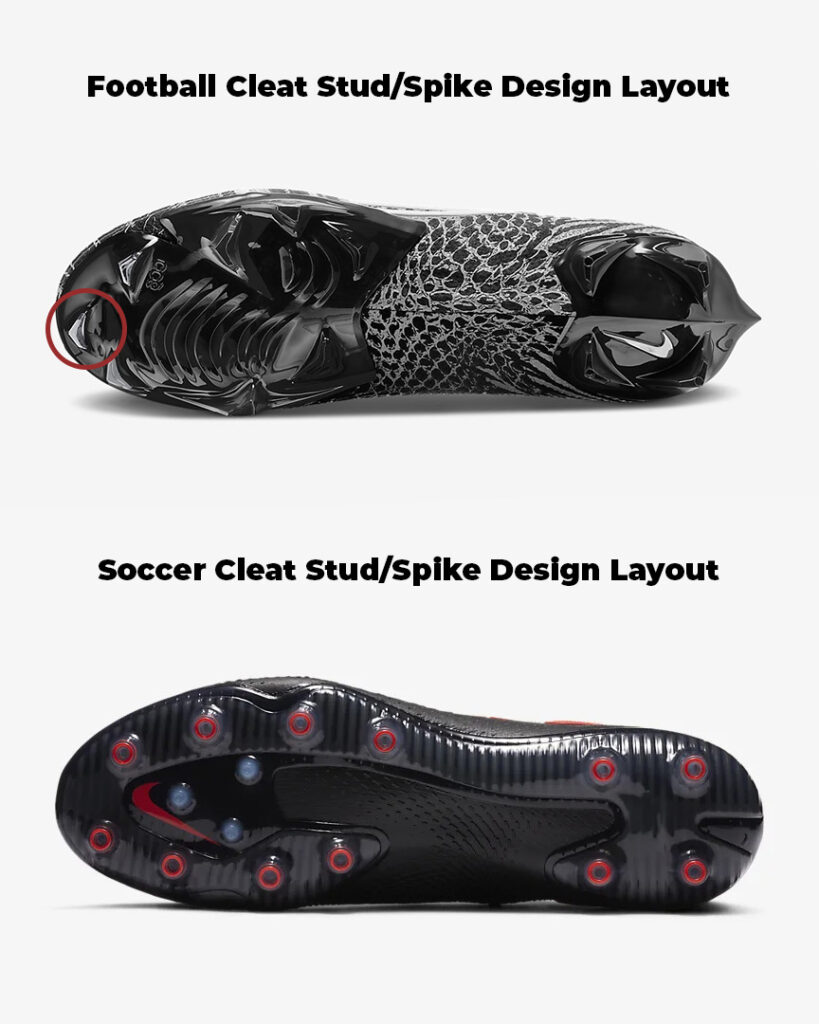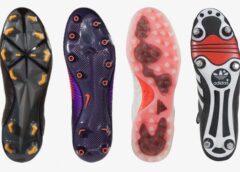Soccer Cleats vs. Football Cleats: Understanding the Key Differences
Introduction
When it comes to footwear in sports, the right choice can make all the difference in performance and safety. One common question that arises is whether soccer cleats can be used for football. While it is technically possible to wear soccer cleats in football, it may not be the best option due to key differences in design and functionality. In this blog post, we will delve into the specifics and explain why soccer cleats are not recommended for optimal performance in football.

The Distinctive Features of Football Cleats
Football cleats are specifically designed for the demands of the sport, with notable differences in their outsoles compared to soccer cleats. The most significant disparity lies in the type of studs used. Football cleats feature shorter studs that provide superior traction on the field. These cleats are suitable for football, lacrosse, and baseball, although they may not offer peak performance in each sport.
Toe Cleats and Safety Concerns: One critical aspect that sets football cleats apart from soccer cleats is the presence of an extra “toe cleat” located near the front. This toe cleat can pose safety risks in soccer and hinder players’ ability to control the ball effectively. In soccer, it is essential to have a flat sole to facilitate precise ball contact with the feet. The additional toe cleat in football cleats could lead to injuries and limit a player’s maneuverability on the field.
Grip and Traction
Soccer is a sport that demands agility and quick changes of direction. Wearing normal shoes on the soccer field can result in a lack of friction and grip on the grass, making movements feel unstable and potentially causing accidents. The studs in soccer cleats provide the necessary grip and traction to prevent sliding and ensure stability. Conversely, football cleats may not offer the same level of traction required for the dynamic nature of soccer.
READ ALSO: Zinedine Zidane’s Unforgettable First Encounter with Lionel Messi in 2005
Regulatory Differences
Apart from the physical disparities, there are also regulatory distinctions between soccer and football regarding cleat usage. While football players are generally allowed to wear soccer cleats, soccer players are not permitted to wear dedicated football cleats. Football cleats often have studs positioned further forward on the toe, which can cause discomfort and potential injury to opponents during gameplay. Referees in soccer matches usually inspect players’ cleats to ensure they meet safety standards and do not pose any risks.
Why Soccer Cleats Are Different
Soccer cleats are uniquely designed to suit the requirements of the sport. They are tailored to provide a balance between protection, touch, and maneuverability. The low-cut design of soccer cleats allows for optimal ankle mobility, crucial for executing various techniques and movements. The materials used in soccer cleats are chosen to enhance touch, power, and ball movement. Different play styles may call for specific cleat designs, such as those for midfielders, defenders, or strikers.
Conclusion
While it may be possible to use soccer cleats for football, it is not recommended for optimal performance and safety. The distinctive features of football cleats, including the toe cleat and stud design, are specifically tailored to meet the demands of the game. Soccer cleats, on the other hand, prioritize touch, freedom of movement, and ball control. To ensure the best experience and minimize the risk of injuries, it is advisable to use cleats designed specifically for the sport you are playing.




